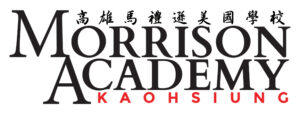Mathematics
Morrison strives to help students understand and appreciate math as well as use it to glorify God. Thus, the purpose of mathematical instruction at Morrison is to develop students who obtain a mastery of, and appreciation for, the content and processes of mathematics, as well as an understanding of how math relates to other domains in life. This program blends traditional and constructivist approaches to enrich the students’ mathematical development.
Goals
To help today’s students prepare for living responsibly in God’s world, the goals of school mathematics must be appropriate for the demands of a global information age. Morrison believes that these four broad goals will meet students’ mathematical needs.
1. Have a Mastery of Mathematical Content and Understanding
Students should be proficient in their computational and procedural math skills and have a conceptual understanding of core mathematic topics of:
- Number and Operations
- Algebra
- Geometry
- Measurement
- Data Analysis and Probability
2. Be Able to Process Mathematically
Students should be able to process mathematically using:
- Reasoning and Proof
- Problem Solving
- Communication
- Connections
- Representation
3. Value and Have Confidence in Mathematics
Students should know that mathematics is an essential component of who they are, and that mathematics is integral in every area of life. These understandings should lead them to have an incentive to continue the pursuit of a better understanding of how mathematics relates to them.
4. Integration with Other Domains
- Technology
- Connection of God with math and math with God
- Connection with other subjects such as science, history, social studies, etc.
- Students should recognize the roles mathematics plays in society:
- from accounting and finance to scientific research
- from public policy debates to market research and political polls.
Grade 6
Beginning in middle school mathematics, the focus shifts to rates, ratios, and proportions. In addition, students begin to use the standard algorithm for division exclusively. A strand covering “Expressions and Equations” is introduced, which increases the abstract and algebraic nature of the mathematics. The four critical areas in this course are: (1) connecting ratio and rate to whole number multiplication and division and using concepts of ratio and rate to solve problems; (2) completing understanding of division of fractions and extending the notion of number to the system of rational numbers, which includes negative numbers; (3) writing, interpreting, and using expressions and equations; and (4) developing understanding of statistical thinking.
Grade 7
This mathematics course continues to focus on ratios, rates, and proportions, as well as algebraic representations. The critical areas are: (1) developing understanding of and applying proportional relationships; (2) developing understanding of operations with rational numbers and working with expressions and linear equations; (3) solving problems involving scale drawings and informal geometric constructions, and working with two- and three-dimensional shapes to solve problems involving area, surface area, and volume; and (4) drawing inferences about populations based on samples.
Grade 8
Pre-Algebra
This mathematics course introduces a strand on functions, preparing students for entry into high school algebra next year. Instructional time focuses on three critical areas: (1) formulating and reasoning about expressions and equations, including modeling an association in bivariate data with a linear equation, and solving linear equations and systems of linear equations; (2) grasping the concept of a function and using functions to describe quantitative relationships; (3) analyzing two- and three-dimensional space and figures using distance, angle, similarity, and congruence, and understanding and applying the Pythagorean Theorem.
Algebra I
Algebra 1 strengthens the student’s understanding of arithmetic and develops his/her skills of translating verbal expressions into mathematical symbols, numerical expressions, and open sentences. Topics of emphasis include solving equations, inequalities, multiplying and factoring polynomials, graphing linear equations and solving radical expressions. (Prerequisites: 90% or higher in seventh-grade math, pass the Algebra placement test [85% or greater], and have demonstrated good study habits in grade 7 math.)
